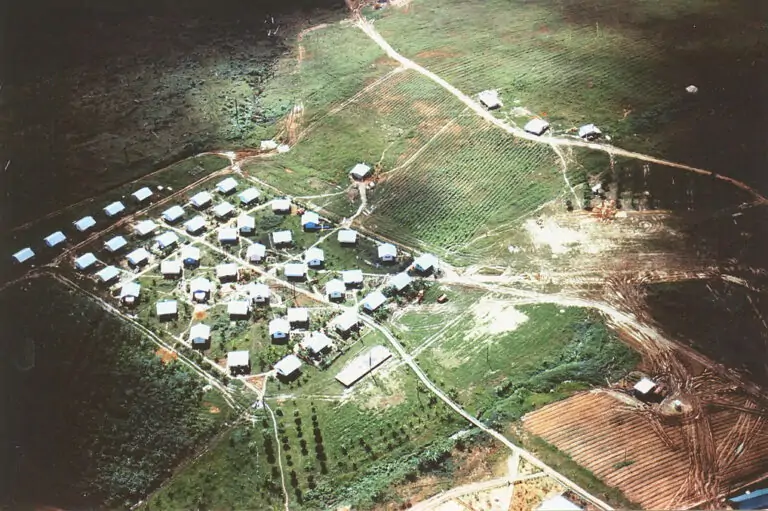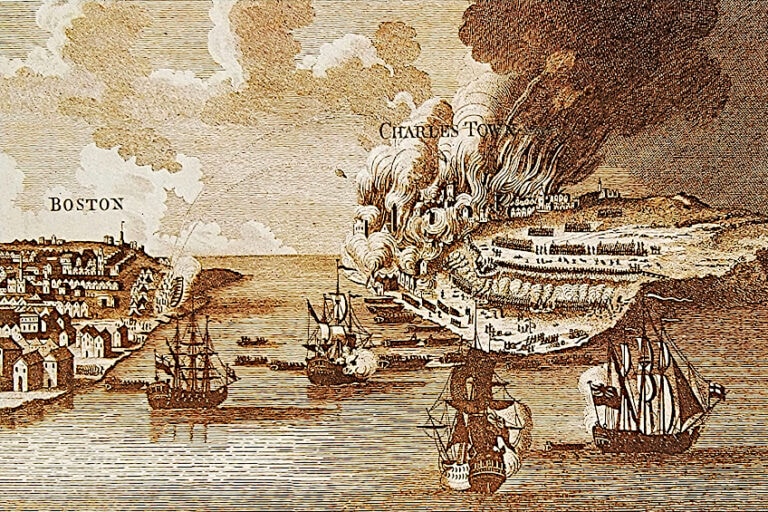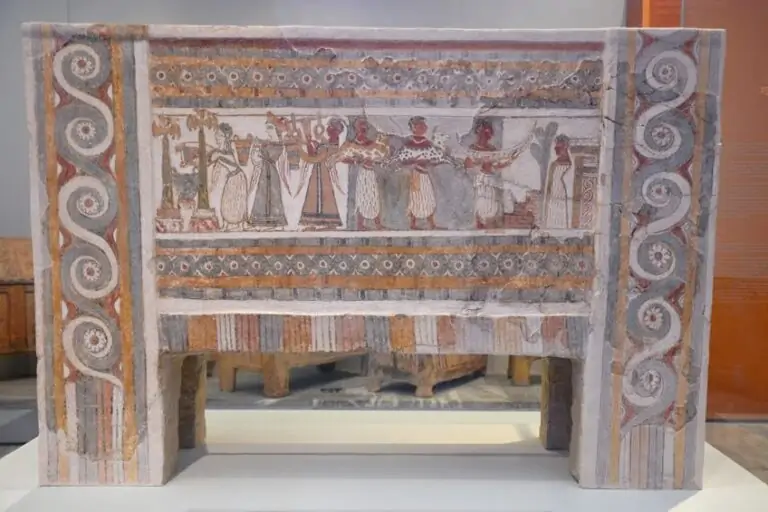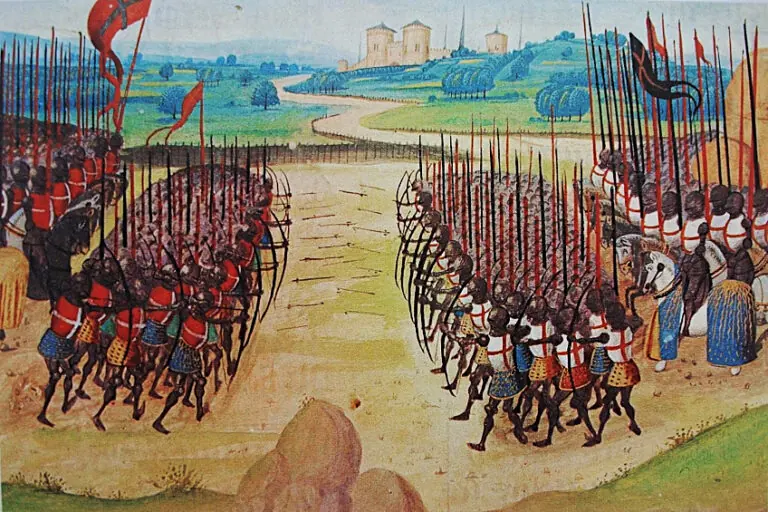Greek History Sunken City Pavlopetri – The Lost City Under the Sea
The lost city of Atlantis has fascinated historians and lovers of mythology for years. This ancient city is believed to have possessed technology and infrastructure far beyond what any other civilized society had at the time, and was heralded by those who witnessed its existence. There are many stories and legends surrounding the ancient city and its inhabitants, and there seems to be a bit of truth surrounding these stories. Let’s have a look at what Pavlopetri was, where it was located, and what inevitably caused it to sink to the bottom of the ocean.
Contents
What Was Pavlopetri?
The city of Pavlopetri is an ancient Greek city that eventually sunk to the bottom of the ocean. It is currently sitting submerged off the Southern coast of Laconia all the way in Peloponnese, Greece, essentially between the islet of Pavlopetri and the coast of Poutana, along the Peloponnese peninsula.
What really sets this sunken city apart from some of the others we know of it’s the nearly pristine state it was found in, and the fact that much of its roads and cities are still intact.
The city was discovered all the way back in 1967 by one Nicholas Flemming, who decided to map out the submerged city along with a team of archaeologists from the University of Cambridge. When it was initially discovered it was believed that the city was created between 1600–1100 BCE also known as the Mycenaean period.
 Reconstruction of a Mycenaean ship; Spiridon Ion Cepleanu, CC BY-SA 3.0, via Wikimedia Commons
Reconstruction of a Mycenaean ship; Spiridon Ion Cepleanu, CC BY-SA 3.0, via Wikimedia Commons
However, as time went on and different means of identification were developed it was discovered that the city was more likely to have been constructed around 3500 BCE. It seems that this error occurred due to the fact that the sunken city contained a number of artifacts from various time periods that conflicted with one another.
These eras include the Bronze age, Chalcolithic age, and even the Final Neolithic Age. This assortment of artifacts has shed light on the people that the town may have come into contact with, as well as the primary economic output of the era. It would seem that the city served as an epicenter of trade and commerce between the neighboring islands at one point.
According to reports the city would have been completely submerged around 1000 BCE.
What caused it to sink to the bottom of the ocean you ask? Well, according to historical accounts, the city sank as a result of a series of earthquakes causing damage to both the city and the area it was situated on. This would cause the city to buckle and sink to the bottom of the ocean. This isn’t an uncommon theme throughout the history of the region. Many ancient cities were brought to ruin as a result of natural disasters like these, causing their residents and contents to be lost to nature in what would presumably be the blink of an eye.
History and Layout of the Sunken City of Pavlopetri
There are a couple of firsts associated with the town of Pavlopetri aside from it being one of the most intact historical sites in existence. Another first associated with this town is that it was the first to ever be digitally surveyed in 3D, allowing researchers and archaeologists alike to study its structure, layout, and the functions it once fulfilled.
The actual 3D mapping took place back in 2009 and was aided largely by developments in military technology and technologies used to find oil deposits to thank for this revolutionary view of the city. The overall structure consists of around 15 buildings that are submerged about 4 meters from their roof surfaces., but the entirety of the locations covered by the 3D mapping device cover nearly 9000 square meters.
The discovery of the town prompted the use of many technologies that were still in the process of development, one of them being underwater robots that could survey the town’s many streets and buildings to confirm that it was a textile hotspot back in its heyday. These were provided by the Australian center for robotics, and are noted to have confirmed that the town was a textile center, and contained loads of pots from Crete, which indicates that it was likely a trade hub of sorts. The city seemed to be relatively advanced in terms of infrastructure, including things like waterways and even rudimentary water pipes that allowed the majority of the city’s inhabitants to have unfettered access to water.
This was pretty advanced for the region and the time period and is one of the many reasons why the city and its contents are still studied today.
Where Is the Sunken City of Pavlopetri Located?
The underwater city in Greece is located off the coast of the mainland. Specifically, Pavlopetri is located between two of the major Greek Islets where it sank to the bottom of the ocean and remains there to this day. The names of the two islets that the underwater city in Greece is located between are Pavlopetri and the Pounta coast of Laconia.
Relative to the mainland, the site of Pavlopetri is located Northeast of the village on the island of Elafonisos. The perimeter of the archaeological site including places of interest in the surrounding era is considered to fall under the jurisdiction of the Elafonisos Municipality, which used to be called You Gnathos.
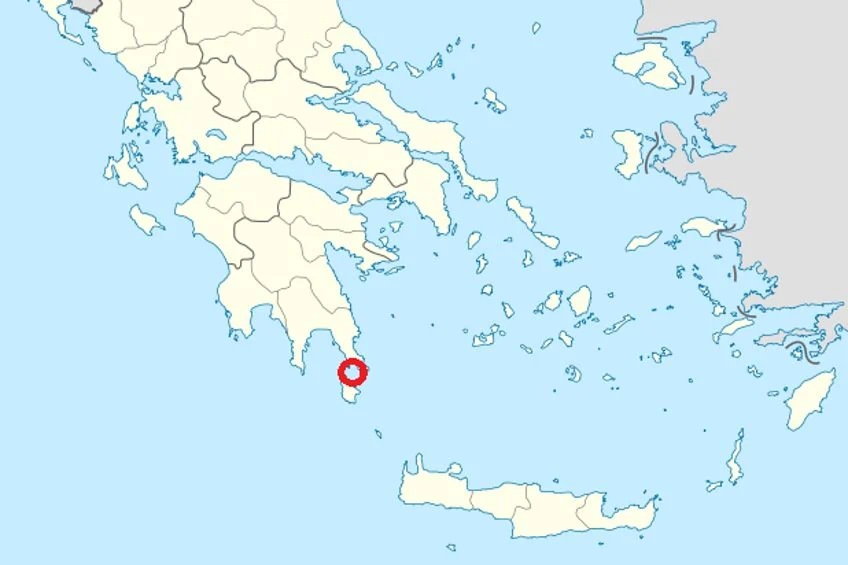 Map of Greece Pavlopetri; Greece_location_map.svg: Lencerderivative work: Saltmarsh, CC BY-SA 3.0, via Wikimedia Commons
Map of Greece Pavlopetri; Greece_location_map.svg: Lencerderivative work: Saltmarsh, CC BY-SA 3.0, via Wikimedia Commons
This being said it is believed that the primary function of the city was to link the islets of Eflafonisos and Peloponnese. It functioned as a sort of bridge city or communal hub, these days due to the rising sea levels and the islands drifting further and further away from one another, even if Pavlopetri Greece still existed today, it could not fulfill this function.
There are various discoveries that point to the fact that this was the original function of Pavlopetri Greece.
There are items that would have only been found on the two neighboring islets present in the underwater ruins, and there are indents on the side of the sunken city that suggest a cart system once existed to assist with the transportation of trade goods.
Now that you know what the sunken city of Pavlopetri is, where it is located, what happened to it, what it was used for, and why it is still being studied today, it’s time for you to get out there and put your newfound knowledge to the test. If you have the opportunity, we highly recommend visiting this incredible historical site.
Frequently Asked Questions
What Is the Name of the Lost City Under the Sea?
While most of us would refer to the lost city under the sea as Atlantis, this is believed to be mostly fictional. The name of the real famous lost city under the sea is Pavlopetri. This Greek city sank to the bottom of the ocean due to a series of earthquakes in the area it was located in.
Is Pavlopetri Atlantis?
While it would be reasonable to assume that the story of Atlantis was derived from the story of Pavlopetri, in reality, Pavlopetri predates the story Atlantis quite a bit. However it is believed to at the very least have been an inspiration for the tale of the utopian city.
What Was Found at Pavlopetri?
Pavlopetri is believed to have been an epicenter of trade in the region. This island served as something of a halfway point between two other islets in the region, and as a result, loads of pottery and containers were found that would have contained various goods being traded or bought by parties in and around the city.

I am deeply passionate about history and am constantly fascinated by the rich and complex stories of the past. As the editor-in-chief of learning-history.com, I have the opportunity to share this passion with a wide audience through the creation and distribution of engaging and informative content about historical events, persons, and cultures. Whether it’s through writing articles and blog posts or creating videos or podcasts, I strive to bring the past to life in a way that is both accurate and enjoyable. My expertise in history, combined with my strong writing and communication skills, allows me to effectively communicate complex historical concepts and make them accessible and interesting to a wide range of readers. I am truly grateful for the opportunity to share my love of history with others through my work on learning-history.com.

